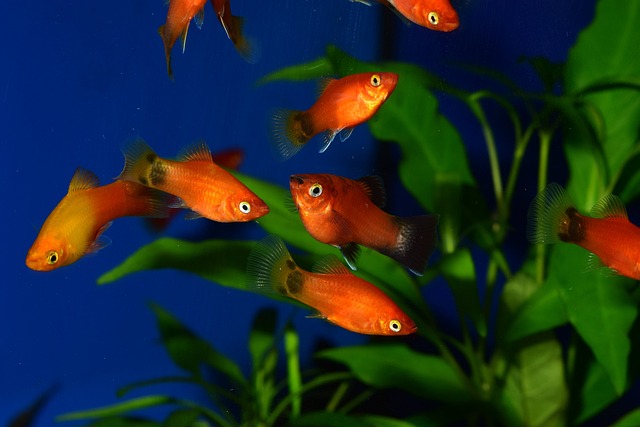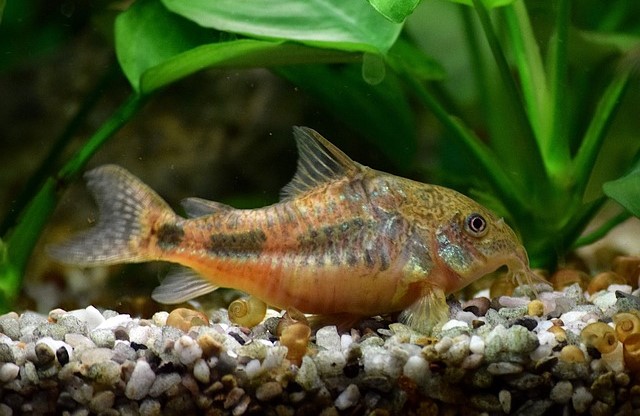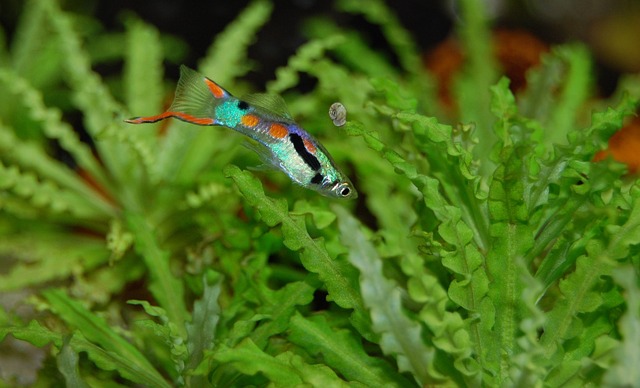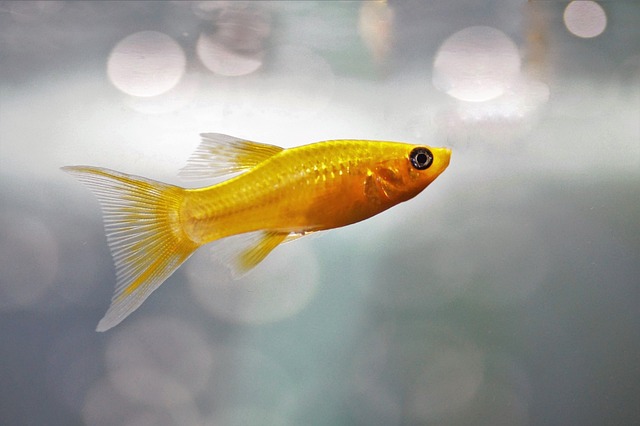Bringing the beauty of the underwater world into your home is a rewarding experience, but choosing the right fish for your aquarium can be a daunting task. Fear not! We’ve compiled a list of the top 10 best fishes for your home aquarium, along with all the information you need to care for them properly. From their preferred diet to tank size requirements, we’ve got you covered.
Table of Contents
1. Betta Fish
Description: Betta fish, also known as Siamese fighting fish, captivate with their vibrant colors and graceful fins. Their striking appearance makes them a popular choice for aquarium enthusiasts.
Food: Feeding your Betta fish is a breeze. They happily munch on pellets and flakes, readily available at pet stores. For a special treat, offer them live or frozen foods like bloodworms and brine shrimp. This diverse diet keeps them healthy and happy.
Care: Keeping Betta fish is a joy, thanks to their low-maintenance nature. They thrive in smaller tanks, starting from just 2.5 gallons. Regular water changes ensure a clean and healthy environment for your Betta. With proper care, these beautiful fish will flourish and bring joy to your home.

2. Neon Tetra
Description: Neon tetras are tiny bursts of color that can brighten up any aquarium. Their small size and vibrant hues make them a delightful addition to your underwater world.
Food: Feeding neon tetras is a breeze. They happily munch on high-quality flakes, readily available at pet stores. For a special treat, offer them small live or frozen foods like brine shrimp and daphnia. This varied diet keeps them healthy and their colors vibrant.
Care: Taking care of neon tetras is easy, as long as you meet their basic needs. These social fish thrive in schools of six or more, so be sure to keep them in a group. Providing them with a tank of at least 10 gallons gives them plenty of space to swim and explore. Adding plants to the tank not only enhances their natural habitat but also gives them hiding spots, making them feel secure. With proper care, your neon tetras will dazzle you with their beauty for years to come.

3. Guppy
Description: Guppies are like living jewels, with their dazzling colors and lively personalities. Their playful antics and vibrant hues make them a favorite among aquarium enthusiasts.
Food: Feeding guppies is a breeze, thanks to their varied diet. They happily munch on flakes and pellets, readily available at pet stores. For a special treat, offer them occasional live or frozen foods like bloodworms. This diverse diet keeps them healthy and their colors vibrant.
Care: Guppies are the perfect choice for beginners, thanks to their hardy nature and adaptability. They can thrive in a wide range of water conditions, making them easy to care for. A tank size of 10 gallons or more is suitable for a small group of guppies, providing them with plenty of space to swim and explore. With proper care, your guppies will brighten up your aquarium with their beauty and charm.
4. Molly Fish
Description: Mollies are like a canvas of colors, with their diverse hues and peaceful demeanor. Their serene presence and graceful movements make them a sought-after addition to any aquarium.
Food: Feeding mollies is simple, as they have an omnivorous appetite. They readily consume flakes and pellets, which you can easily find at pet stores. For added variety, offer them vegetable matter, such as blanched spinach or zucchini. Occasional live or frozen foods, like bloodworms, can also be offered as a treat. This balanced diet ensures their health and vitality.
Care: Caring for mollies is a rewarding experience, provided you meet their specific needs. These fish prefer slightly brackish water conditions, so adding a bit of aquarium salt can mimic their natural habitat. A tank size of at least 20 gallons is ideal for mollies, providing them with ample space to swim and explore. Hiding spots and plants are essential for their well-being, as they offer security and stimulation. With proper care, your mollies will thrive and bring tranquility to your aquariums cape.
5. Platy Fish
Description: Platies are like bursts of sunshine in your aquarium, with their vibrant colors and lively demeanor. Their active nature and charming personalities make them a delightful addition to any aquatic community.
Food: Feeding platies is a breeze, as they have a similar diet to their guppy and molly cousins. They readily consume flakes and pellets, which you can easily find at pet stores. For added variety, offer them occasional live or frozen foods, such as bloodworms. This balanced diet ensures their health and vitality.
Care: Caring for platies is a joy, thanks to their easy-going nature. These fish thrive in community tanks, where they can socialize and interact with other species. A tank size of at least 10 gallons provides them with plenty of space to swim and explore. Adding plants and hiding spots to the tank not only enhances their natural habitat but also gives them security and stimulation. With proper care, your platies will flourish and bring joy to your aquarium for years to come.

6. Corydoras Catfish
Description: Corydoras catfish are the unsung heroes of the aquarium, with their tranquil demeanor and unique appearance. Their peaceful nature and bottom-dwelling habits make them an invaluable addition to any aquatic community.
Food: Feeding Corydoras catfish is straightforward, as they have an omnivorous appetite. They readily consume sinking pellets and flakes, which you can easily find at pet stores. For added variety, offer them occasional live or frozen foods, such as bloodworms. This diverse diet ensures their health and vitality.
Care: Caring for Corydoras catfish is a rewarding experience, provided you meet their specific needs. These fish thrive in groups, so be sure to keep them in a school of six or more. A tank size of at least 20 gallons provides them with ample space to swim and explore. A sandy substrate is essential for their well-being, as it mimics their natural habitat and prevents injury to their delicate barbells. Adding plenty of hiding spots to the tank gives them security and stimulation. With proper care, your Corydoras catfish will thrive and bring tranquility to your aquariums cape.

7. Angelfish
Description: Angelfish are like regal dancers in your aquarium, with their striking patterns and graceful movements. Their majestic presence and elegant demeanor make them a captivating centerpiece for any aquatic display.
Food: Feeding angelfish is a breeze, as they have an omnivorous appetite. They readily consume flakes and pellets, which you can easily find at pet stores. For added variety, offer them occasional live or frozen foods, such as bloodworms. This balanced diet ensures their health and vitality.
Care: Caring for angelfish requires attention to their specific needs. These fish require a tall tank of at least 30 gallons to accommodate their size and graceful movements. They prefer to be kept in pairs or small groups, providing them with companionship and reducing stress. Providing ample space and swimming room is essential for their well-being. With proper care, your angelfish will thrive and become the majestic focal point of your aquarium.
8. Goldfish
Description: Goldfish are like living treasures, with their shimmering scales and graceful movements. Their timeless beauty and tranquil demeanor make them a beloved addition to any aquarium.
Food: Feeding goldfish is simple, as they have an omnivorous appetite. They readily consume flakes and pellets, which you can easily find at pet stores. For added variety, offer them occasional live or frozen foods, such as bloodworms or brine shrimp. This balanced diet ensures their health and vitality.
Care: Caring for goldfish requires attention to their specific needs. These fish thrive in spacious environments, so providing them with a tank of at least 20 gallons is essential. Goldfish produce more waste than other fish, so regular water changes and filtration are crucial for maintaining water quality. They also appreciate a variety of decorations and plants in their tank, providing them with hiding spots and stimulation. With proper care, your goldfish will shimmer and shine for years to come.

9. Kissing Gourami
Description: Kissing gouramis are unique and affectionate fish known for their distinctive behavior and striking appearance. Their captivating presence and curious nature make them an intriguing addition to any aquarium.
Food: Feeding kissing gouramis is simple, as they have an omnivorous appetite. They readily consume flakes and pellets, which you can easily find at pet stores. For added variety, offer them occasional live or frozen foods, such as bloodworms or brine shrimp. This balanced diet ensures their health and vitality.
Care: Caring for kissing gouramis requires attention to their specific needs. These fish thrive in peaceful environments, so providing them with a tank of at least 30 gallons is essential. Kissing gouramis can grow quite large, so ample space is necessary for their comfort. They also appreciate a variety of hiding spots and decorations in their tank, providing them with security and stimulation. With proper care, your kissing gouramis will thrive and become affectionate companions in your aquatic world.

10. Oscar Fish
Description: Oscar fish are renowned for their impressive size, striking appearance, and intelligent behavior. These majestic giants captivate aquarium enthusiasts with their unique personalities and commanding presence.
Food: Feeding Oscar fish is relatively straightforward, as they are voracious eaters with hearty appetites. They primarily consume high-quality pellets and flakes formulated specifically for large cichlids. Additionally, offering occasional live or frozen foods such as bloodworms, earthworms, or small fish can provide enrichment and variation in their diet. It’s essential to avoid overfeeding, as Oscar fish are prone to obesity and related health issues.
Care: Caring for Oscar fish requires dedication and attention to their specific needs. Due to their substantial size and territorial nature, they require a spacious tank of at least 75 gallons for a single fish, with larger tanks recommended for multiple Oscars or tankmates. Providing ample filtration and performing regular water changes are crucial to maintaining water quality, as Oscar fish produce a significant amount of waste.
Decorate the tank with sturdy decorations and hiding spots to create a comfortable environment, but be mindful that Oscars may rearrange or even destroy decorations as they grow. Lastly, closely monitor water parameters and be prepared for potential aggression, especially during territorial disputes or breeding behavior. With proper care and attention, Oscar fish can thrive and become cherished members of your aquarium family.

Choosing the right fish for your home aquarium is crucial for their well-being and your enjoyment. By selecting any of the top 10 fishes mentioned above and providing them with proper care, you can create a beautiful and thriving aquatic environment right in your living room. Remember to research each species thoroughly and provide them with a suitable tank size, appropriate diet, and a conducive environment for their specific needs. Happy fishkeeping!














